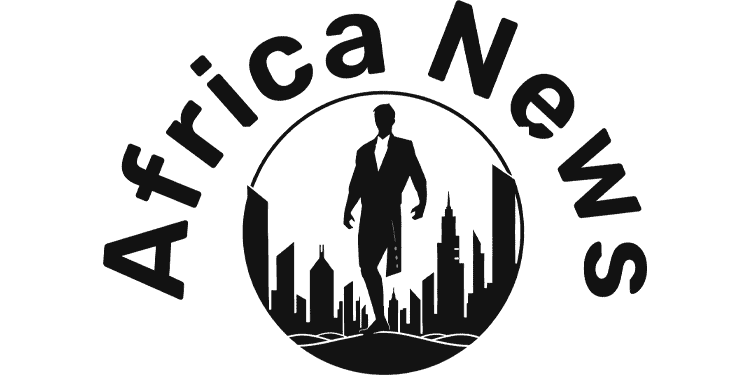It is estimated that nearly 20 percent of the world’s population is neurodivergent. This demographic represents people with Neurodevelopmental Disorders (NDDs) and Intellectual and Developmental Disabilities (IDDs).
For this population, a trip to the mall, a government office, a retail store or an interview at an office block, can trigger a mental meltdown. And in case of an emergency, while they are in a commercial building, a mere emergency exit or a loud alarm may put their lives at risk.
For years, commercial developers have designed buildings for the neurotypical population, often leaving out the neurodivergent. Some would say developers are not just leaving money on the table, but also fueling social exclusion by ignoring this market segment when designing commercial buildings.
DN2 Property had a chat with Dr Phidel Baraza, the founder of Beauty Out Of Mire (BOOM) Trust, an organisation dedicated to creating inclusive environments for individuals with Neurodevelopmental Disorders.
She shares her journey – from surviving a healthcare nightmare, to raising a child with multiple NDDs and advocating for inclusivity in commercial spaces. In her words, here’s what inclusion should look like, but first let’s take a brief trip back to 2010, where it all began:
Medical Nightmare
“My journey into understanding Neurodevelopmental Disorders began in 2010. I was pregnant with twins and the pregnancy was problematic because I had fibroids. Fibroids normally compete for space with the foetus and in an attempt to dominate they try to flash them out. With twins, I had to work very hard to keep them safe.
At 29 weeks, in March 2010, I had an emergency and I rushed to the hospital. I was admitted and given medication, but my body reacted negatively – it retained all the fluid. I was swollen and it was painful. With too much water in my body, high blood pressure kicked in and the risk heightened for both myself and the twins.
I was advised to deliver through an emergency caesarean section at 30 weeks which is preterm. I named the twins Miracle and Blessing. Unfortunately, three weeks after delivery, the first twin, Blessing, passed on. At this point, I had to leave Miracle at the hospital to go bury her sister. It was truly a difficult time, having to go through so much as a new mother.
Multiple Neurodevelopmental Disorders
The second twin, Raziela Miracle stayed at the hospital, undergoing treatment till June, when we left hospital for the first time. At three months old, following a blood transfusion, she acquired Cytomegalovirus (CMV), which had a significant impact on her health. She would go on to develop multiple conditions, including a convulsive disorder, delayed developmental milestones, cerebral palsy, autism spectrum disorder (ASD), and a sensory disorder associated with autism.
Multiple Therapies
Living with multiple Neurodevelopmental Disorders comes with a unique set of challenges. Cerebral Palsy, for instance, affects her muscle tone and coordination, making it difficult for her to gain independence in movement while Autism spectrum disorder (ASD) affects her communication and social behaviours. On top of this, the sensory disorder makes her hypersensitive to stimuli – meaning she experiences sensory overloads when exposed to things like noise, too much light or touch.
Isolation and Social Exclusion
Beyond the health-related challenges, managing multiple conditions can also take an emotional and mental toll on both my daughter and I. Not to mention the financial demands and sacrifices I have to make to ensure she gets the best care.
One other major challenge that few understand is the isolation from society and all the spaces that are inaccessible to people with special needs. Many public and social environments are not well-suited for children with complex special needs.
For instance, sometime back we went to a retail commercial building to shop for my daughter’s clothes. From the parking lot to the entrance, the lifts and the shops – it was clear that commercial spaces are not designed with NDDs in mind. At the parking lot, the security personnel could not understand why we wanted to use the space reserved for people with disabilities, yet my daughter did not seem to have a physical disability to them.
Walking into the building was also a challenging experience. People not only stared in a way that made my daughter uncomfortable, but some collided with her as they expected her to move aside. The lifts were congested and the shops did not have changing rooms designed for people with disabilities.
Advocating for others
Due to the challenges we’ve experienced, I have had to take on the role of an advocate for Raziela, ensuring that she has access to inclusive educational and social environments. I struggled to find the right resources and support for my daughter. We’ve gone to many schools where we were rejected because they were not designed or structured to accommodate her needs.

Raziela Miracle, 14, has multiple Neurodevelopmental Disorders and is the Brand Ambassador for Mr & Miss Inclusive Kenya 2024.
Photo credit: Pool
The negative experiences fueled my determination to understand the brain and development of children with injuries like Raziela’s. I went back to school and pursued a PhD in Education, specialising in Child Development with an emphasis on Neurodevelopmental Disorders. After completing my studies and realising that I could now help Raziela in ways I had not known before, I saw the same agony reflected in other families raising children with NDDs.
Many families dream of moving to the Western world, where inclusivity and support systems are more advanced, but this is not a feasible solution. The lack of support for children and youth with NDDs in our part of the world is stark. I have never walked into a mall or a commercial building in Kenya where I felt like my daughter’s needs were considered.
For children like Raziela simple activities that other children enjoy are out of reach. And growing up presents uncertainties. Some may not grow up to vote, pursue careers, shop for their favourite clothes or enjoy a visit to the mall like other people. Not because they are incapable, but because the buildings where these activities take place do not recognise their special needs. Often, they retreat to the comfort of their homes.
Navigating commercial buildings
People with disabilities face a number of challenges that make commercial spaces inaccessible. Bright lights, loud noises, and crowds, for example, tend to overwhelm people with NDDs, ultimately triggering anxiety or meltdowns.
Individuals with IDDs, such as Down Syndrome or intellectual impairments, often struggle with complex environments. Intellectually, they may not be able to navigate through a building that would be considered normal by neurotypical people.
Poor signage, lack of clear directions, and overly complicated layouts cause confusion, leading to frustration or even disorientation. We also lack user-friendly technology in buildings, such as voice-activated systems or customisable visual displays, which make navigation easier.
With emergencies and evacuations in mind, some emergency exits are not accessible for wheelchair users. And for people with cognitive and sensory impairments, these exits need to be marked with visual and auditory cues for them to understand.
Alarms, which are popularly used to signal an emergency, do not work for people with hearing difficulties. Most importantly, many staff personnel are not trained to communicate with or assist people with different disabilities during emergencies.
To address these barriers, commercial buildings need to be designed thoughtfully. Interestingly, design changes are not that complicated and they do not cost that much to implement.
Sensory Rooms in Corporate Spaces
In a corporate workspace or other buildings where people shop or go for services, for instance, people with NDDs can benefit from a sensory room or a quiet zone. This is a designated space which helps them calm down when they are having a meltdown. When exposed to stimuli, they feel as if the brain is about to explode and that leads to a meltdown. During a meltdown, they may shout, scream, or cry.
Some of them flap their ears to try and self-regulate. Sensory rooms will help them self-regulate and cool down privately. The room needs to be calming and soundproof for privacy. The lighting can be adjustable such that people regulate the brightness according to their needs and preferences. It needs to be airy but not too much light should be coming through the windows to avoid more sensory overload.
Outside the sensory room, developers need to incorporate Sensory-friendly features. Soft, adjustable lighting will help reduce overstimulation from harsh lights. In spaces such as corridors or waiting areas where no tasks are carried out, they could invest in dimmable lights. To manage noise, sound-absorbing materials (like acoustic panels) on walls, floors, and ceilings can create calmer, less overwhelming environments.
Simplified Layouts and Signage
Malls in Kenya are also leaving out a large market segment. To make them inviting to people with NDDs they could incorporate play areas with controlled noise and controlled lighting. In addition to such special, designated spaces, developers should also rethink signage in commercial zones.
Colour coding the signage, for instance, makes it very easy for people with IDDs to identify directions. The colour red, for instance, is universally known to signify danger while blues and greens represent safety. Developers may use such large high contrast coloured signs throughout the building accompanied by simple text and universal symbols.
Visual cues such as arrows, colour-coded pathways and floor markings (such as what we had during the pandemic on maintaining distance) can help in guiding individuals with IDDs and NDDs. Simple and intuitive, open layouts that minimise confusion will also go a long way in making commercial buildings inclusive. Lastly, instead of loud alarms during emergencies, developers can use vibrating floors to guide people with NDDs to safety, since alarms trigger sensory overload and confusion.
Technology in Enhancing Inclusion
When it comes to technology in inclusivity, we have several advancements that go beyond traditional disability-friendly features. Traditionally, visually impaired people, for example, have been guided by tactile features such as changes on the floor or pavement textures. In the modern world, developers can incorporate braille on staircase railing to guide them to various parts of a building.
Elevators, door entry ways, and other systems can be controlled via voice commands to assist those with limited physical mobility. Touchscreens with customisable settings for brightness, contrast, or touchless interfaces can enable interaction for individuals with various impairments.
Lastly, mobile apps offering indoor navigation and real-time assistance, available in multiple formats (visual, auditory, text), can help users with different disabilities navigate buildings independently. Of course, staff in commercial buildings can be trained on how to communicate with people with various disabilities, the dos and don’ts and how to assist them in case of an emergency.
Neurodiversity in Developed Countries
We could borrow a leaf or two from countries like Singapore, which has invested in indoor navigation apps that utilise real-time GPS to provide step-by-step assistance for individuals with disabilities. These apps are especially helpful in large public spaces like shopping malls and transport hubs.
Germany is using beacon technology, particularly in train stations and airports, to help individuals with visual or cognitive impairments receive real-time navigation assistance. Beacon technology sends push notifications to smartphones, guiding users with detailed instructions. This kind of technology is not only useful to people with special needs, but also appeals to tourists experiencing language barriers.
In Sweden, advanced emergency evacuation systems in commercial and public buildings are redefining inclusivity. They are using visual and auditory alerts tailored to individuals with hearing impairments or cognitive challenges. Some buildings are also equipped with vibrating floors and personalised apps that guide individuals with disabilities to safety.
Finally, Japan has been at the forefront of incorporating smart environmental controls in public spaces, including malls and airports, which allow people to adjust lighting, sound, and temperature based on their sensory needs. These systems help individuals with unique sensitivities, navigate spaces more comfortably.
To transition into neurodivergent spaces in Kenya, developers need to partner with bodies that understand and advocate for such. They could also partner with parents and caregivers. Inclusive design is not just beneficial for the users. Developers will enjoy a wider market reach, enhanced property value, a positive brand image and funding from bodies that support social impact.
In the long run, maintenance costs will also be lower for inclusive buildings as there will be no need to renovate and upgrade to make them inclusive. Moreover, commercial tenants are now more aware of their clients’ needs and buildings that provide the best customer experience will enjoy higher demand in the future.
Brand Ambassador Role
Just recently, Raziela was crowned Brand Ambassador for Mr & Miss Inclusive Kenya 2024. The pageant calls for inclusivity for marginalised people. It was not easy but the experience was an eye opener. She got an opportunity to interact with the world and we learned a lot about her interests. This opportunity has given me hope that our society is becoming more inclusive, where children like Raziela can be seen for their potential and contributions, not just their challenges.
Source link : https://nation.africa/kenya/business/what-neurodiversity-in-commercial-buildings-should-look-like-4789638
Author :
Publish date : 2024-10-10 05:00:00
Copyright for syndicated content belongs to the linked Source.





